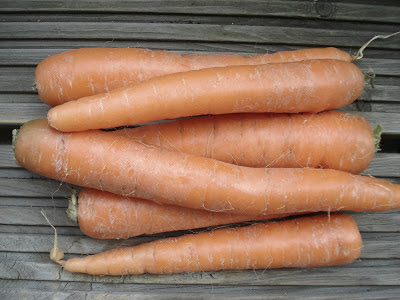Embrace
I lived in Europe for five years, but it wasn't until I returned to Montreal that the opportunity to visit Italy came up. A close friend from cooking school was getting married in her husband-to-be's hometown: Florence. How can I say no to that? It was a whirlwind vacation, too short to really soak in the sights, but I do remember the food vividly.
I could wax on about the beauty of Florence, but I won't. What struck me about that city -besides the oozing culture, and the sensory overload- was the Florentines' love of vegetables. While I have noticed a nascent esteem for the humble vegetable both in France and in the UK, it paled in comparison to what I witnessed in Florence. It has nothing to do with the cult of vegetarianism and the eco-warrior mentality one sometimes sees in North America, but rather it was a deep seated respect for the vegetable and the place it should take at the table. Florence is at the heart of Tuscany after all, and la Toscana, birthplace of the Italian Renaissance, is also well-known for its fertile lands.Walk into any ristorante, trattoria, or osteria, and you will be amazed by the vegetable's presence on the menu.
No wonder the Florentines have left their mark on almost all spinach-based dishes (eggs Florentine, anyone?), and on the Florence fennel. Fennel bulb is not a true winter vegetable in most of Canada, but it is a perennial plant in more clement climates, so if you live in USDA zone 6 or higher, and are a fan of fennel, plant it in your garden. And if you like fennel, but have a bare spot in the garden, plant it anyway: fennel is a striking plant. It will need to be protected from snow if you intend to harvest it in the winter. Chances are you too do not have access to locally produced fennel after autumn, so if you are intent on eating local and varied in the winter, you might have to grow your own.
Fennel bulb, with its mild anise flavour, and almost-celery-like crunch is a wonderful addition to crudité platters, but it literally shines in the following salad: sliced thin, and layered with rounds of oranges, the fennel takes on a new dimension. Drizzled with a fruity olive oil, seasoned with coarsely ground pepper and flakes of sea salt, this salad is simplicity itself, and yet, it is stupendous. An ideal salad for wintry days: it has none of the delicate fluff of lettuces and baby leaves; it has body, and flavour, and most importantly, it has a tremendous crunch to remind you with each bite that you are well and truly alive. The crisp crackle will envelop you, your own personal white noise. Pair it with a bowl of borscht, and you have an absolutely fabulous meal.
When purchasing fennel, choose one that is evenly coloured, not too green (or it will be more fibrous, and will have a more pronounced licorice flavour), with as few blemishes as possible. If the bulb comes with its fronds untrimmed, remove them when you get home, leaving about 3 cm (1½") of stem that you will trim off when you are ready to use the bulb. However, do not discard the fronds: they can be used just like regular fennel herb, and would be lovely in a creamy salad dressing; or in a tuna sandwich (with any fish really); or wherever you happen to need some fresh herbs. Fennel bulbs are usually pristinely clean, but check to make sure that there is no clod of dirt hidden in its nooks before processing.
Insalata de Finnocchio è Arancia
Feeds two to four, although I'd keep it all to myself
1 large fennel bulb
2 medium sized navel oranges
Sea or kosher salt
Coarsely ground pepper
Good olive oil
Trim the root end and stems of the fennel. Remove any blemishes, if necessary.
Cut in two lengthwise, remove the tough core.
Lay the fennel on its flat side, and slice as thinly as possible. Set aside. (You can also use a mandoline.)
With a sharp knife, slice off the oranges' peel. (See here for a pictorial description.)
You can either cut the oranges into segments, or just slice into thin rounds. Save the juices.
Layer the fennel and oranges on a platter, sprinkling some salt and pepper between the layers.
Drizzle generously with olive oil, and reserved orange juice.
Serve.
This salad is so simple that it is very important you use the best ingredients you can afford. The olive oil need not be a ridiculously expensive one, but it is crucial that it has a flavour you like. If you are not a fan of olive oil, use a neutral or citrus-flavoured oil instead, or omit it altogether. Do not use table salt for this salad: a friend recently commented that table salt did not taste very salty. I wouldn't have noticed, I don't keep table salt at home because I find its texture too fine. I think it has to do with the additives (regular table salt has iodine and an anti-caking agent added), but table salt just tastes muddled, and you end up using a lot more of it than is actually good for you. Since sea and kosher salts have no additives, their flavours are -for lack of a better word- brighter, so a little goes a long way.
Bon app'!
En français









Looks delicious! Great photos! We want to try pickling them next year.
ReplyDeleteHI! Saw your fennel dish looks great! I'm Italian so I've always used them but this is a new spin. You should enter this dish into the Food Network show www.recipetoriches.ca!!!
ReplyDelete